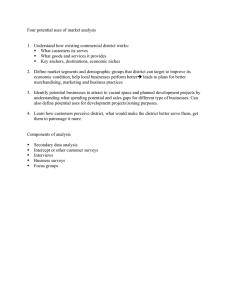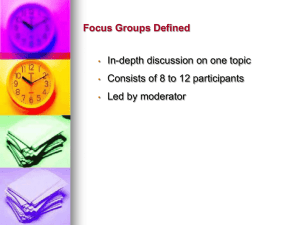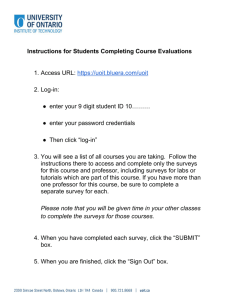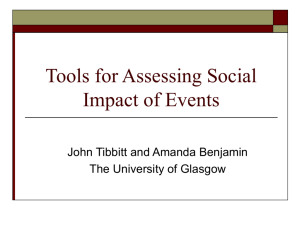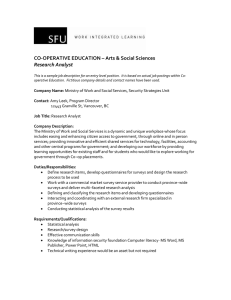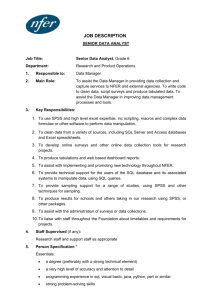AAUDE doctoral exit survey
advertisement
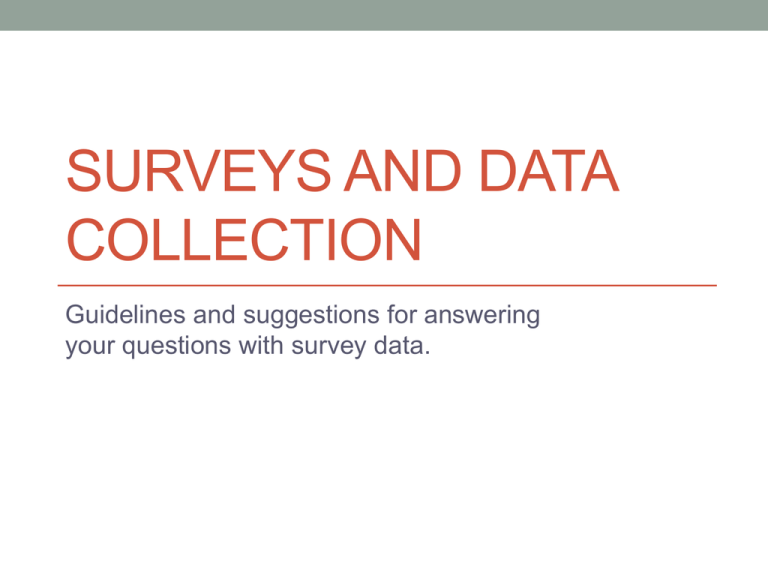
SURVEYS AND DATA COLLECTION Guidelines and suggestions for answering your questions with survey data. Overview • Survey design • Implementation • Analysis • Questions 2 Work Backwards • Analysis is the last step in the process, but you should have it in mind during planning and implementation. • Start with the overarching question you want to answer. • Decide what kind of data could answer that question. • Design an instrument or process that can produce that data. 3 Your question • What are you trying to learn? • How can this question be best answered? • Existing sources of data • Focus groups • Surveys • Observation • As with most projects, if you don’t have a good elevator pitch, you need to simplify. 4 Survey Design • Keep questions simple. • People have short attention spans. • Only one question at a time. • Example: “Why did you choose to…” should become “Did you choose to…” and “If yes, why?” • No loaded questions. • Example: “How bad is the smell in W20?” • Consider the burden of analysis. • Multiple-choice vs. open-ended. • Don’t ask anything you won’t use. • Always imagine the person taking the survey. • Order matters. 5 Survey Implementation • Using Humans as Experimental Subjects • COUHES training • Test your survey • Incentives • Sample or Census • Confidentiality, anonymity, or neither • Web tools • Interviews • Leading • Judging • Tape recording 6 Analysis • SPSS: Not intuitive, expensive, but makes pretty output • • • • • • easily. SAS: Similar to SPSS. Stata: On Athena, easy to use, ugly tables, nice graphs. R: If you don’t already know what R is, then it’s probably not right for you. Most questions can be answered with simple frequencies. Share results with your subjects. If you plan to try to make causal claims, that’s another presentation. 7 Questions? • Resources available on the web: • http://web.mit.edu/ir/surveys 8
